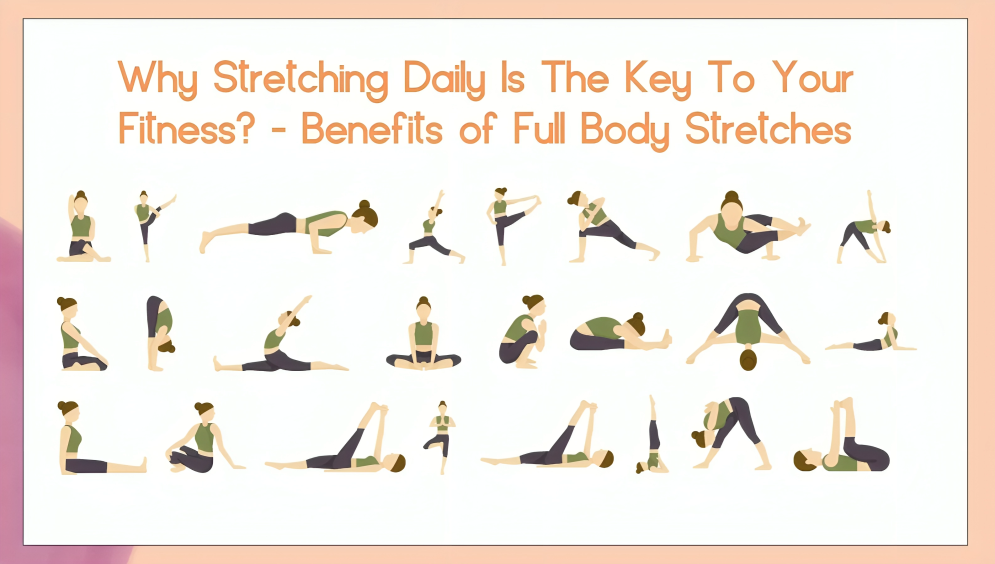Stretching is an essential component of a well-rounded fitness routine. It improves flexibility, reduces the risk of injuries, and enhances overall movement efficiency. Whether you’re an athlete, a casual exerciser, or someone looking to maintain mobility, incorporating stretching into your daily routine can yield numerous benefits.
Benefits of Stretching
1. Improves Flexibility and Range of Motion
Regular stretching increases muscle elasticity, allowing for a greater range of motion.
Improved flexibility helps with daily activities and athletic performance.
2. Reduces the Risk of Injuries
Stretching prepares muscles and joints for movement, reducing the likelihood of strains or tears.
It helps maintain proper posture and muscle balance, preventing overuse injuries.
3. Enhances Blood Circulation
Stretching improves blood flow to muscles, aiding in quicker recovery and reducing muscle stiffness.
Better circulation helps deliver oxygen and nutrients to muscle tissues.
4. Relieves Muscle Tension and Stress
Stretching promotes relaxation and helps release built-up tension in muscles.
It can be particularly beneficial for those who sit for long hours or have physically demanding jobs.
5. Improves Posture and Alignment
Tight muscles can lead to poor posture and discomfort.
Stretching helps align the body properly, reducing back, neck, and shoulder pain.
Types of Stretching
1. Static Stretching
Holding a stretch for 15-30 seconds to lengthen muscles.
Best performed after a workout to cool down.
2. Dynamic Stretching
Controlled movements that prepare muscles for activity.
Ideal before exercise to increase blood flow and mobility.
3. PNF (Proprioceptive Neuromuscular Facilitation) Stretching
Involves contracting and relaxing muscles to increase flexibility.
Often used in physical therapy and advanced flexibility training.
4. Active Stretching
Engaging opposing muscles while holding a stretch without external assistance.
Improves muscle control and balance.
Best Practices for Effective Stretching
Warm up before stretching to avoid injury (light cardio or dynamic movements).
Stretch all major muscle groups, focusing on tight or overused areas.
Hold stretches gently, avoiding bouncing to prevent strain.
Breathe deeply to enhance relaxation and muscle release.
Stay consistent—daily stretching leads to the best results.
Check more blog content on carpeluxfitness.com








Leave A Comment